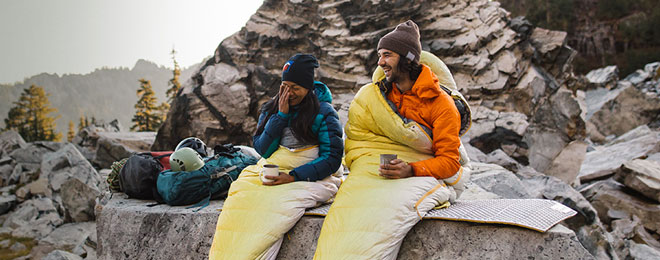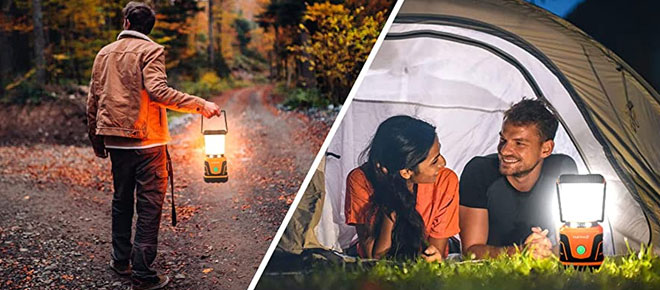Exploring the Different Types of Awning Tents

Awning tents are a great way to add more space for guests, protection from sun and wind, and privacy. They are easy to set up and can be operated manually or electronically.
Awnings can create a comfortable ambiance for entertaining and relaxing, regardless of the season. To choose the best tent for your needs, you will need to understand the different types of awnings.
Roof Rack Awnings
While many campers have at some point constructed a village of blue tarps hanging from trees to give them some shelter, roof rack awnings are an easier, more reliable way to do the job. These awnings extend from 6 to 8 feet (depending on the model) from your vehicle and provide plenty of shade. They also protect you from both the sun and the rain, so you can enjoy your outdoor time without worrying about getting too much of either.
The big advantage of this style of awning is that it’s easy to set up and take down, even for one person. The side poles that support the awning can be pulled free from their clips and then lowered down so you can extend them to the height you want the awning to be. Once the awning is fully extended, the side poles can be locked back into place and then raised to their full height.
There are a few drawbacks to this type of car awning though, which can make it less than ideal for some users. First, it’s a bit bulky when retracted, and the awning can be a little tricky to move when you’re using it. It’s also not a great choice for windy weather, and you’ll need to have a plan for securing it in the event of a strong gust.
You can get around these drawbacks a bit by buying heavy-duty stakes and carabiners to use along with your awning. The stakes can be driven into the ground to secure the awning, and the carabiners can be hooked to the guy line holes in the awning to prevent them from being pulled out in windy conditions. Tie-down straps can then be attached to the carabiners and ratcheted tight to hold the awning securely in place.
These modifications can cut down the set-up and pull-down times significantly, making this type of awning much more suitable for itinerant camping or anyone who wants to leave their car parked in a remote location for longer periods. It’s still a good idea to have at least two people helping when setting up and taking down this style of awning, though, as the process can be very cumbersome for just one person. If you're considering these modifications or any other camping equipment, be sure to check for any available 4wd Supacentre Promo Codes that might provide you with cost savings or discounts on your chosen products.
Sidewall Awnings
Awnings are a great addition to any caravan, and they offer a space where you can cook, wash, or simply relax during your holidays. They’re also an ideal way to protect your vehicle from the elements, such as rain and sun damage. To ensure your awning tent is a comfortable place to sleep, you’ll want to use a breathable material under it. Using a tarpaulin can make it feel hot under the tent, so consider investing in a special awning flooring that will allow you to feel the ground beneath your feet. A good example is the Adventure Kings Mesh Flooring, which has a unique weave that drops small particles such as dirt and sand through but prevents them from coming back up.
Another great advantage of a side-wall awning is that it can provide additional privacy. It can block the sun’s rays, which can help avoid the deterioration of furniture and decorative elements located outside your caravan. It can also protect you from prying eyes and unwanted attention from neighbors.
In terms of style, awning tents come in a variety of shapes and sizes. Some are dome-shaped and can be placed over smaller entryways or windows, while others are elongated and establish a wider footprint outside of doorways. Some can even double as a porch, with one or more doors and windows that can be opened for ventilation and natural light.
If you’re considering purchasing an awning tent, it’s important to understand the difference between it and a caravan canopy. Awnings are typically installed and attached to caravans, while caravan canopies can be used anywhere and are often found on picnic tables or hilltops. However, some people are confused about the difference between these two types of products, which can lead to a mispurchase that leads to disappointment. To avoid this, it’s crucial to take the time to research your options thoroughly and select an awning tent that is right for you. By doing so, you can ensure your awning tent will be a worthwhile investment that provides years of enjoyment. You’ll never regret the extra comfort that a well-designed awning tent can bring to your camping adventures!
Half Wall Awnings
Awnings are a great way to add shade and protection from the sun without adding too much to the look of your home. They come in all sorts of colors, styles, and sizes, and are available in retractable models that can be opened and closed manually or with a motor, although the motorized systems are by far the most popular choice for homeowners today. Retractable awnings also offer the advantage of being able to protect against extreme weather conditions by retracting in high winds or heavy snowfall.
A specialized type of awning is the batwing awning, which extends to the rear of your vehicle or home and provides more shade than a standard awning. These types of awnings are ideal for campers who use their truck or SUV to haul gear and equipment around the campground, or tailgaters who enjoy grilling for friends at their favorite stadium. They are also great for RVers who want to extend their living space outdoors.
Retractable awnings typically come in a wide range of materials, colors, and patterns and can be customized to meet individual design preferences. The most common awning fabric is solution-dyed acrylic, which offers a variety of colors, textures, and performance grades. Other options include vinyl and canvas.
Traditionally, awnings were made of canvas duck, a tightly woven cotton cloth that was used for centuries to make tents and sails. These were often rolled up when not in use and could be easily retracted in case of a storm.
Today’s awnings are built using a variety of materials, from lightweight aluminum and vinyl to fiberglass and wood. The most common frame material is steel, which is durable and low-cost and can withstand most wind conditions, but the most important factor in choosing an awning is how well it fits the needs of the homeowner.
ALEKO’s Half Cassette Awning Ceiling Bracket is designed for ALEKO’s half cassette awnings, but it will work with any brand that has similar dimensions. The bracket makes it easy to hang your awning from the ceiling rather than the wall and is perfect for areas where a full cassette awning would be too bulky. It is easy to install and can be repositioned in the future when you want to move your awning.
Full Wall Awnings
An awning is a roof-like cover that mounts to a wall or over a door to offer shade and shelter from rain, wind, or snow. They can be made of fabric or metal, and are often found over windows and doors in homes and business establishments. They are available in different shapes, sizes, and materials, and can be fixed or retractable, according to Jim Kopf, vice president of Nashville Tent And Awning Co.
Awnings are a great way to add color, flair, and style to a home or business establishment, while also adding extra living space. They can also reduce the amount of sunlight that reaches indoor spaces, helping to keep them cool and reducing energy bills. In addition to being functional, they can also make a property more attractive and increase its value.
The most common type of awning is the patio awning, which is usually installed over a garden or terrace to provide shade and shelter. It is made of a waterproof fabric and can be extended to a desired length. Some are manually operated and can be opened or closed by hand, while others are motorized and are controlled by electricity.
Another type of awning is the window awning, which is used to protect windows from the sun’s direct rays. They are available in a variety of colors and styles and can be fitted with a curtain or blinds to enhance the appearance of a room. Window awnings are also great for reducing heat loss, and can help to save on heating costs during the winter months.
There are also several other types of awnings, including semi-cassette and open awnings, which can be mounted on walls and over entrances to homes and businesses. A full cassette is a good choice for those who want maximum protection from the elements, as it will cover the roller and arm mechanism when it is retracted. This will help to prevent debris from falling onto the awning, and will also offer some protection against vandalism. A semi-cassette awning is less protective, but will still provide some cover from the wind and rain. If you're considering these different types of awnings for your home or business, keep an eye out for any available sports outdoors that could potentially offer discounts or special deals on your preferred awning.
Conclusion
awning tents are a great way to add extra space to your camping setup. From freestanding to vehicle-mounted, there are a variety of types to choose from depending on your needs and preferences. A roof tent is perfect for those who want to sleep off the ground, while a freestanding awning tent is ideal for a more spacious living area. Whichever type you choose, an awning tent is sure to enhance your camping experience.








